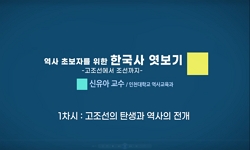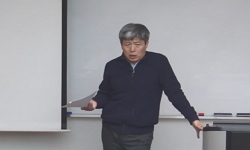이 글은 지금까지 크게 주목하지 않았던 入唐留學(西學)하지 않은 禪僧―``國內派`` 선승들에 대해 살펴본 것이다. 신라하대의 碑文이나 僧傳 등을 통해 대체적인 생애를 알 수 있는 선승은 ...
http://chineseinput.net/에서 pinyin(병음)방식으로 중국어를 변환할 수 있습니다.
변환된 중국어를 복사하여 사용하시면 됩니다.
- 中文 을 입력하시려면 zhongwen을 입력하시고 space를누르시면됩니다.
- 北京 을 입력하시려면 beijing을 입력하시고 space를 누르시면 됩니다.

신라하대 "국내파(國內派)" 선승(禪僧) 연구 -현황과 존재양상을 중심으로- = A Study on the "Home-Grown" Zen Monks during Late Silla -Focusing on the current status and aspects of existence-
한글로보기https://www.riss.kr/link?id=A60192512
- 저자
- 발행기관
- 학술지명
- 권호사항
-
발행연도
2012
-
작성언어
Korean
-
주제어
신라하대 ; 선종 ; 선승 ; 서학 ; 국내파 ; 유학파 ; Late Silla ; Zen Buddhism ; Zen Monks ; 禪僧 ; Western Learning ; 西學 ; home-grown school ; 國內派 ; overseas-grown school ; 留學派
-
KDC
151
-
등재정보
KCI등재
-
자료형태
학술저널
-
수록면
321-354(34쪽)
- 제공처
-
0
상세조회 -
0
다운로드
부가정보
국문 초록 (Abstract)
이 글은 지금까지 크게 주목하지 않았던 入唐留學(西學)하지 않은 禪僧―``國內派`` 선승들에 대해 살펴본 것이다. 신라하대의 碑文이나 僧傳 등을 통해 대체적인 생애를 알 수 있는 선승은 대략 30여명 가량이 된다. 그 중에서 전체의 약 60∼70%에 달하는 20여명 정도의 선승들이 중국으로 유학을 떠난 入唐求法僧, 즉 西學僧이었다. 이런 점에서 신라하대는 서학이 대세를 점했던 시기라 하겠다. 그럼에도 불구하고 유학을 떠나지 않고 국내에서 수학한 ``국내파`` 선승이 대략 10여명으로, 약 30∼40%에 달하였다. 신라하대 선종의 올바른 이해를 위해서라도 이들에 대해 주목할 필요가 있다. 국내파 선승들은 최소한 6頭品 정도의 사회·경제적 기반을 가지고 있었다. 이들은 신라선종의 初傳僧이나 開山祖 문하에서 수학하고 인가를 받았다. 그리고 왕실이나 호족세력의 귀의를 받아 명망을 쌓아 나갔으며, 불교사상계나 신라사회로부터 역량을 인정받았다. 이들이 본격적으로 활동하는 시기는 景文王대인 860년대 이후가 아닌가 한다. 국내파 선승들은 중국에서 전래된 선종불교가 정착하여 어느 정도 신라화되었음을 보여주는 증거이다. 그리고 신라사회가 자체적으로 선승을 배출할 수 있는 사상적, 사회적 시스템이 갖추어졌음을 확인하는 가늠자이기도 하다. 국내파들은 留學派에 비해 크게 차별받지 않았던 듯하다. 이는 선승들에게 있어서 서학이 필수가 아니라 선택사항이었음을 알려주는 것이다. 국내파 선승들은 자신들이 서학하지 않은 사실을 정당화하기 위해 "禪宗이 동쪽으로 왔으므로(佛法東流說), 서학이 필요하지 않다(西學不要論)"고 주장하였다. 이에 대해서는 추후 살펴볼 예정이다.
다국어 초록 (Multilingual Abstract)
This study examines the Zen Monks -``home-grown`` Zennist-who did not conduct Western learning though it has hardly been paid attention to so far. The Zen Monks whose life in general can be known through the epitaphs or Seungjeon(僧傳) in Late Silla...
This study examines the Zen Monks -``home-grown`` Zennist-who did not conduct Western learning though it has hardly been paid attention to so far. The Zen Monks whose life in general can be known through the epitaphs or Seungjeon(僧傳) in Late Silla are about 30 ones. Among them, about 20 reaching up to 60 to 70% of the whole were the Zen Monks who were the Ipdanggubeop monks(入唐求法僧) or the monks of Western learning who had studied in China. Considering this, it can be said that Late Silla was the period when Western learning was prevalent. Despite this, the ``home-grown`` Zen Monks who studied locally, not going abroad, were about 10 ones, approximately 30 to 40%. To understand the Zen Buddhism at Late Silla properly, we should pay attention to them, too. The home-grown Zen Monks had the socio-economical ground as about 6 Dupum(六頭品). They studied under Gaesanjo(開山祖) or the early monks of Zen Buddhism during Silla to get approval. And they received the royal family`s or thane`s power to accumulate their reputation. Their capacity was acknowledged by the Buddhistic world of thought or Silla society. Perhaps, the period when they appeared genuinely was after the 860`s, the period of King Gyeongmun. The home-grown Zen Monks are the evidence that shows the Zen Buddhism transmitted from China was settled down in Silla society and became Silla`s to some extent. And they are also the sight to see that Silla society itself was equipped with its own ideological and social systems to cultivate the Zen Monks. And it seems that the home-grown ones were not discriminated greatly in their growth or acquisition of fame as Zen Monks than the overseas-grown ones. This implies that Western learning was not essential to the Zen Monks but an option then.
동일학술지(권/호) 다른 논문
-
신라(新羅) 하대(下代) 승려(僧侶)들의 입당(入唐) 유학(留學)과 선종(禪宗) 불교(佛敎) 문화의 확산(擴散)
- 한국사상사학회
- 조범환 ( Bum Hwan Cho )
- 2012
- KCI등재
-
고려말 선승(禪僧)의 입원유력(入元遊歷)과 원(元) 청규(淸規)의 수용
- 한국사상사학회
- 강호선 ( Ho Sun Kang )
- 2012
- KCI등재
-
최부(崔溥)의 중국표해(中國漂海)와 유학사상(儒學思想)
- 한국사상사학회
- 김봉곤 ( Bong Gon Kim )
- 2012
- KCI등재
-
임진왜란 조선인 포로에 대한 기억과 전승 -"절의(節義)"에 대한 현창(顯彰)과 배제(排除)를 중심으로-
- 한국사상사학회
- 김정신 ( Jung Shin Kim )
- 2012
- KCI등재




 KISS
KISS




